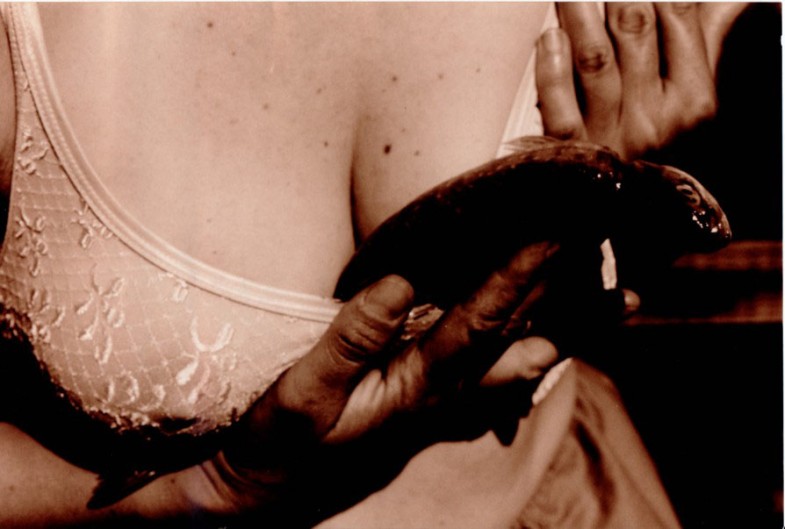All performance artists are repeatedly asked, “What is performance art?”
The question is both a joy and an aggravation. A joyous opportunity to, once again, search for a savvy-ful description of what is so important to us. And an eye-rolling moment of “not again, how can I possibly deliver an illuminating answer?”
Opposite feelings, at the same time true.
Multiple feelings, at the same time true.
Just as performance art is multiple and opposite, between and beyond.
There are the rappers, the wrapper-uppers, those who drag heavy objects or sit still for 12 hours a day, those who shove bananas up their bums, light their hair on fire, or slice/stab themselves and invite the audience to participate.
And now, in our global village circa 2012, there are artists like Iwan Wijono of Jojokarta, who resonates with local artists in creating socially engaged practices that integrate mind, body, and action, and explode our earlier definitions of performance beyond the usual Western-Eurocentric terrain of the Situationist, Surrealist, Dadaist, Fluxist, etc….
Richard Schechner (co-founder of Wooster Group NYC, editor TDR Drama Review) explains to performance artist Guillermo Gómez-Peña in his essay:
[that] “The ‘problem,’ if there is a problem, is that the field [performance art] ‘in general’ is too big and encompassing. It can be, and is, whatever those who are doing it say it is. At the same time, and for the same reason, the field ‘in specific’ is too small, too quirky, too much the thing of this or that individual (artist, scholar) who is doing the doing.”
Marilyn Arsem (performance artist, School of Museum of Fine Arts Boston) http://www.smfa.edu/facultymodule/view/id/42/src/@random4a83044d9a8b2/
says, “Often when I am asked to define performance art, I begin by asking the person to first define painting or drawing or sculpture. Even with familiar media, the task is daunting. One can always think of exceptions and complications…”
Paul Couillard (performance artist/academic/founder of FADO) http://yorku.academia.edu/paulcouillard says, “I have been asked this question so many times in the past 15 years that I have come to believe it is my life’s work to answer it. But this question cannot be answered with words alone. All that I know I have learned by doing, and so I have come to understand that the answer to this question must be inhabited, like life itself.”
Performance is live. Alive. Embodied. It requires the artist to be present in all senses of the word “present”. To forge a sacred trust with the audience (the community/the gathered). To be true in purpose and action. Performance is not theatre, which has its own sacred conventions and definitions. Performance is a tincture in the vein of a ritual or other symbolism acted in public with an open heart. The performance artist is the vessel — the witch, the shaman — creating solo or group actions that lean towards transformation for themselves and others.
Alastair MacLennan (performance artist, Research Professor in Fine Art School of Art & Design, University of Ulster, Belfast) http://www.vads.ucreative.ac.uk/resources/AMW.html replies, “A primary function of art is to bridge our spiritual and physical worlds… Art is the demonstrated wish and will to resolve conflict through action, be it spiritual, religious, political, personal, social or cultural. To heal is to make whole.”
Francisco-Fernando Granados (performance artist) believes it is “the moment words fail you” while Jane Ellison (Body Practitioner) says it is “Life, framed”.
Self-proclaimed “grandmother of performance art”, 63 year old Serbian-born Marina Abramovic, says in Sundance documentary film chronicling her retrospective at Museum of Modern Art (MOMA) that the constant question she experienced was, “Why is this art?” But as she has attained international fame, that question is no longer asked. “Now I am missing it,” Abramovic says.
… missing it…missing it…missing it.
628 words
